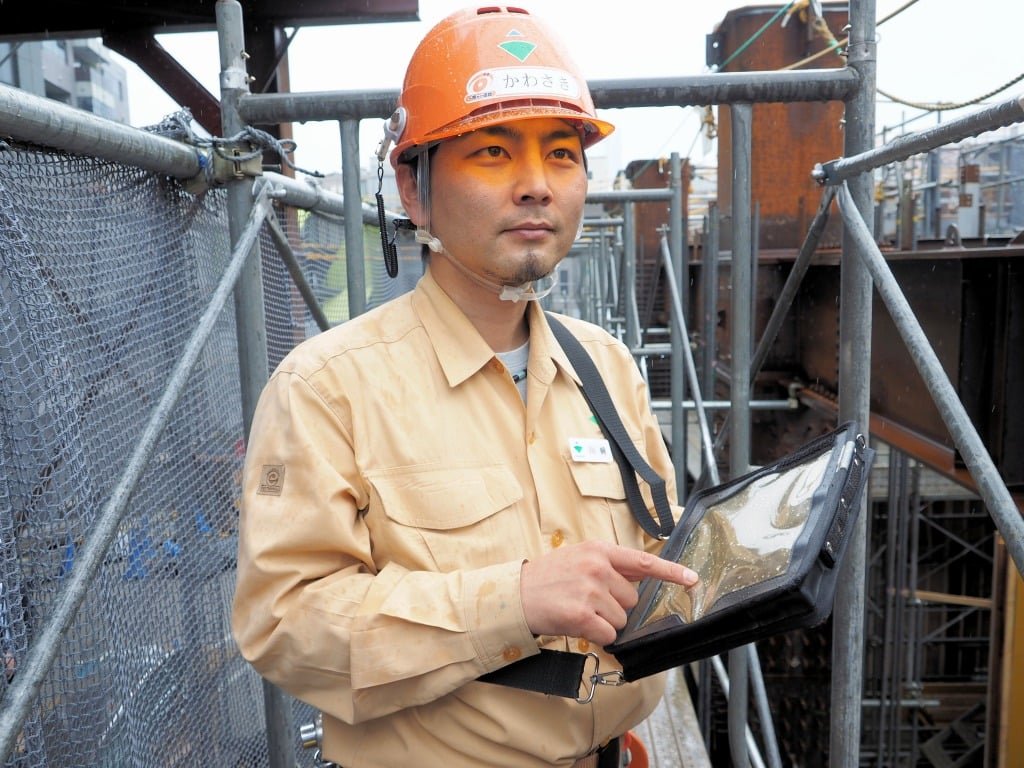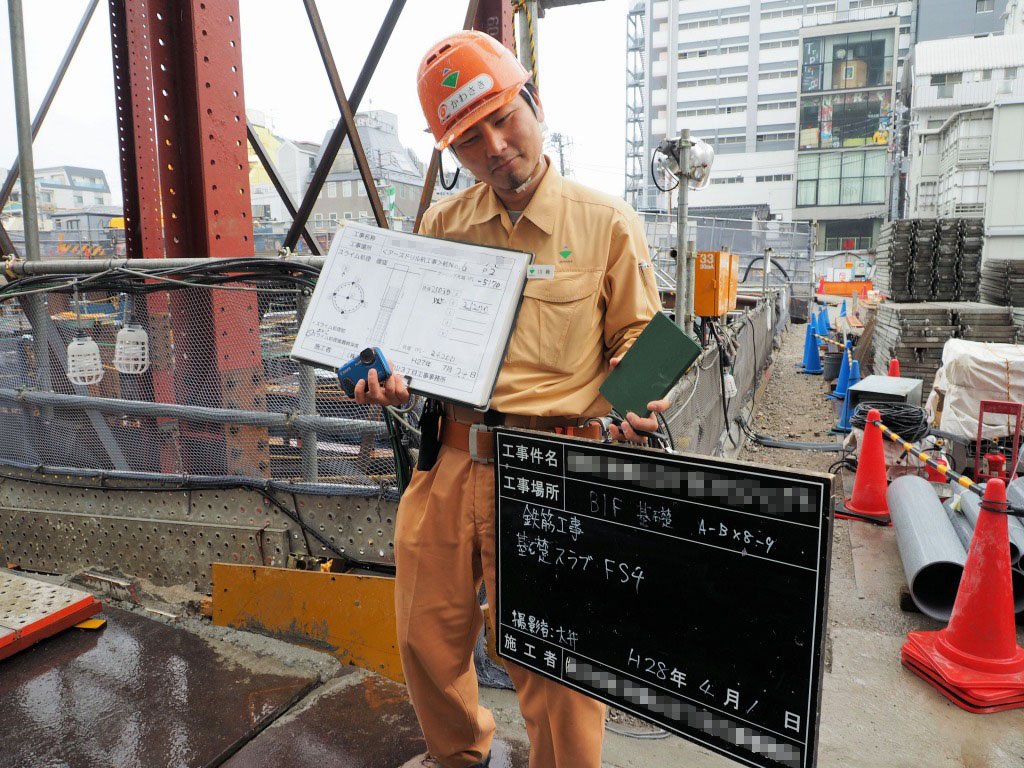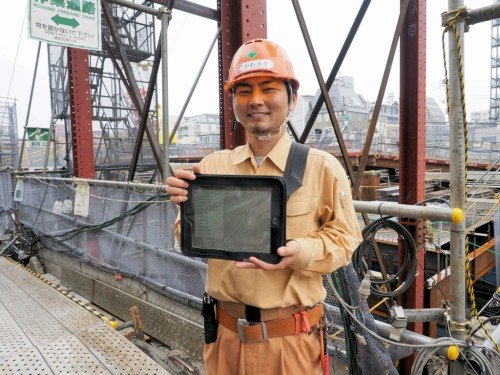Digitising paper notebooks helps Obayashi work smarter.
Obayashi Corporation, a tier-1 Japanese contractor, has introducing MetaMoJi’s GEMBA Note application, an iPad-compatible digital ledger developed in collaboration with MetaMoJi, at all its branches. The Obayashi engineers use an iPad, equipped with a digital camera, sensors & internet access as a field book, resulting in a significant increase in productivity. The engineer who first introduced the system said, “I just can’t ever go back to paper!”.
AFTER
With just an iPad
BEFORE
With paper notebook, camera & board
Obayashi Corporation implemented iPads at construction sites and its head office, witnessing significant advantages. The introduction of iPads notably reduced the amount of equipment needed on-site. Construction supervisor Ryota Kawasaki, based in Tokyo, began using the GEMBA Note app in August 2015, significantly reducing the need for carrying items such as digital cameras, blackboards, and field notebooks. iPad became the preferred platform for managing a range of on-site information including memos, charts, photos, and drawings. GEMBA Note facilitated digital entry of standard forms such as attendance and site inspection records. It even allowed handwritten notes and photo annotations, enhancing efficiency.
The software was a collaborative development between MetaMoJi and Obayashi, digitising various construction management templates, enabling smooth data entry, and improving on-site instructions. Moreover, GEMBA Note improved in-house operations at Obayashi's PD Centre, aiding in the Building Information Modelling (BIM) processes by offering functionalities not available in traditional paper notebooks. This digitisation drove enhanced productivity, streamlined work processes, and promoted a seamless flow of information from field to office, marking a substantial shift from conventional paper-based operations to a digital workflow.



